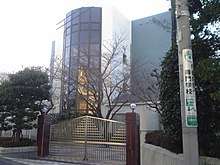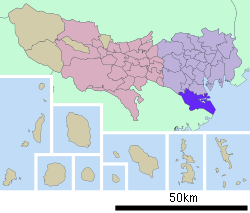Den-en-chōfu
Den-en-chōfu (田園調布) is a district in Ōta Ward in southern Tokyo. It lies along the Tama River, the natural border between Tokyo and Kawasaki, Kanagawa. It is served by Den-en-chōfu Station on the Tōkyū Tōyoko and Meguro lines. Den-en-chōfu includes many detached suburban homes with a variety of styles, including Japanese neo-classical, Edwardian villas, Swiss cottages and modern architectural designs.
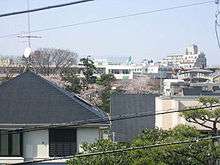
History
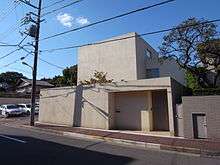
Den-en-chōfu was built based on the "Garden City" idea originally developed by the British city planner Ebenezer Howard.[1] It is one of the most famous and exclusive neighborhoods where many business executives and celebrities reside.[2] Being 10 km away from the center of Tokyo, the area contains natural parks. The area has its own regulations for construction in order to preserve the town feel to the area.[3] The residences are fairly big compared to normal housing in other areas in Japan, and the district is often compared to Beverly Hills, Los Angeles.[4]
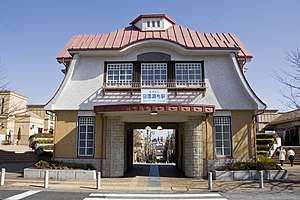
Den-en-chōfu was planned as a garden suburb of Tokyo. In the early 1900s, financier Eiichi Shibusawa bought, named and developed the area by emulating the garden suburbs that were growing in metropolitan areas around the world, particularly those in Greater London.[5] Originally, Den-en-chōfu was developed by the Garden City Company (田園都市株式会社, Denentoshi Kabushiki-gaisha).
Although the area was developing at an adequate pace, it was the Great Kantō Earthquake of 1923 that guaranteed his success. Central Tokyo was leveled in the earthquake, but Den-en-chōfu was virtually untouched;[6] in the aftermath, there was an exodus of people from the central city to the suburbs.
Modern times
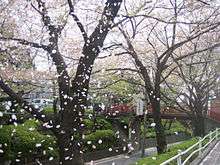
Den-en-chōfu's success has influenced neighboring areas along Tōkyū railway lines in western Meguro, including the Yakumo, Kakinokizaka, Nakane, Okusawa and Jiyūgaoka neighbourhoods.
Den-en-chōfu is known as a very expensive area, with houses that are large by Tokyo standards.[7]
Education
Ōta Ward operates the public elementary and junior high schools in Den-en-chōfu; the Tokyo Metropolitan Government Board of Education operates Den-en-chōfu High School.
Residents
Well-known residents of the area include:
- Ayumi Hamasaki, singer
- Yukio Hatoyama, former Prime Minister
- Yoshinori Kobayashi, manga artist
- Shintaro Ishihara, former governor of Tokyo
- Hiroshi Itsuki, singer
- Max Matsuura, recording executive
- Shigeo Nagashima, baseball player/manager
- Kiichi Nakai, actor
- Katsuya Nomura, baseball player/manager
References
- Oshima, Ken Tadashi (1 January 1996). "Denenchōfu: Building the Garden City in Japan". Journal of the Society of Architectural Historians. University of California Press. 55 (2): 140–151. doi:10.2307/991116. JSTOR 991116.
Notes
- Oshima, p. 140.
- Spacey, John. "Denenchofu: Tokyo's Prestigious Garden Suburb". Japan Talk. Retrieved 21 June 2020.
- Oshima, Ken Tadashi (June 1996). "Denenchōfu: Building the Garden City in Japan". Journal of the Society of Architectural Historians. 55 (2): 140–151. doi:10.2307/991116. Retrieved 21 June 2020.
- Sorensen, André; Watanabe, Shunichi (23 August 2019). Iconic Planned Communities and the Challenge of Change (The City in the Twenty-First Century). Chapter 7: Den-en Chōfu: University of Pennsylvania Press. p. 172. ISBN 978-0812251142.CS1 maint: location (link)
- Oshima, p. 142-144.
- Spacey, John. "Denenchofu: Tokyo's Prestigious Garden Suburb". Japan Talk. Retrieved 21 June 2020.
- "Denenchofu Area Guide". Real Estate Japan. GPlusMedia Inc. Retrieved 21 June 2020.
Further reading
| Wikimedia Commons has media related to Den-en-chōfu. |
- Fukushima, Fujiko (福島富士子) (1997). "田園調布の計画の変遷について" [A Study on the Changes of Den'enchofu]. Journal of the City Planning Institute of Japan (都市計画論文集) (in Japanese). 32: 55–60. doi:10.11361/journalcpij.32.55. - PDF file - English abstract included
